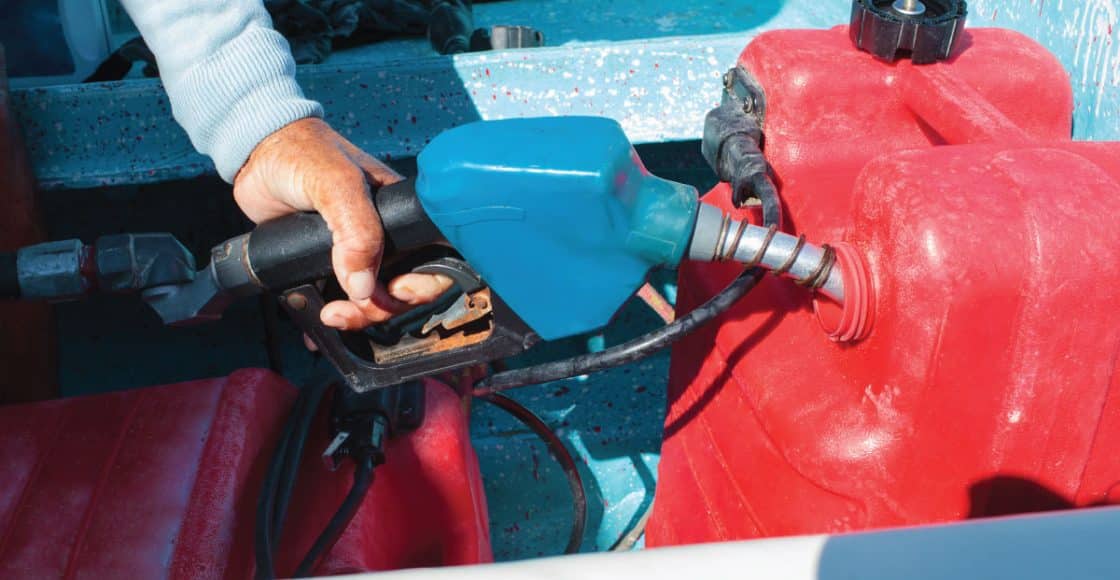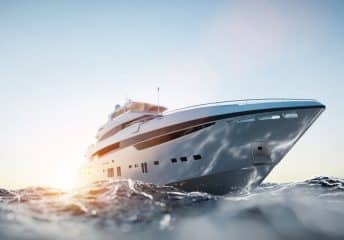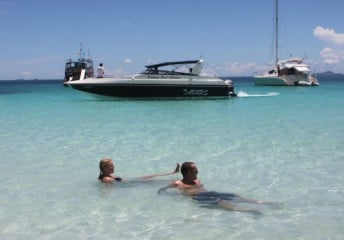Fueling a Boat: How to Properly & Safely Fuel Your Boat
Last Updated on September 1, 2023 by Boatsetter Team
“All boats need fuel, so learn how to fill those tanks properly.” — Boating Expert, Lenny
Fueling a boat shouldn’t be difficult if you’re experienced at fueling a car or truck; you’ll find it’s a piece of cake! There are, however, a few important differences you’ll need to keep in mind. When fueling a boat at a fuel dock, you’re engaging in a process that requires more caution, like avoiding spilling any fuel into our beloved aquatic ecosystem.
Rent, Charter, Share— Only at Boatsetter
Steps for fueling a boat at a fuel dock
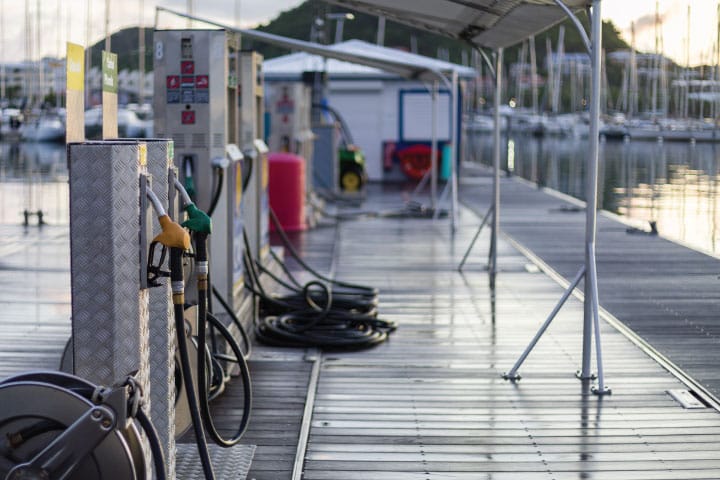
There are a few differences in the process depending on if you fill the boat at a fuel dock or with your boat on a trailer at a gas station. First, let’s consider fueling up at the dock.
- Ensure your boat is secured at the dock, the engine(s) are shut down, and all the lines are cleated. See Tying a Boat to a Cleat Using a Cleat Hitch if you’re unsure how to cleat a line.
- If your boat has a cabin, all the doors and hatches should be closed to prevent fumes from filling the enclosed spaces.
- Open the fuel fill cap.
- Place the fuel pump nozzle down into the fuel fill.
- Pull the pump’s trigger until fuel starts to flow, then gradually increase pressure to increase the speed of the flow. If at any time fuel begins to gurgle back up or splash out of the fill, reduce pressure on the trigger and adjust the nozzle to see if you can get a better flow. With some boats, you may have to fill up at a reduced flow rate to avoid any fuel splashing out of the top of the fill.
- When the tank is full, release the trigger. Never top off a boat’s fuel tank, and if you hear fuel gurgling up the fill line or observe fuel spitting out of the tank’s vent, stop filling it immediately. These are signs that the tank is almost full, and if you keep the pump running, it could cause an overflow.
- Remove the pump nozzle and replace the fuel fill cap.
- If your boat is a stern drive or inboard with a blower, run it for at least four minutes before starting the engine. Sniffing the bilge and/or cabin is also a good idea to ensure fumes aren’t collected there.
Refueling at a gas station on land
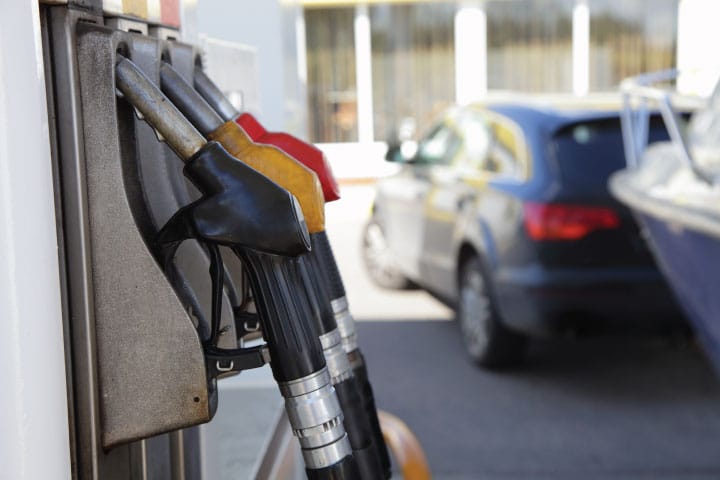
If you’re fueling a boat on a trailer, you may want to tow it to a gas station rather than fueling it on the water. The big advantage here is cost — fuel docks charge a premium. In this case, all of the above steps still apply when setting aside cleating your boat to a dock. There are, however, a few other important considerations.
- Ensure you’re filling up with gasoline approved for marine engines. Gas with 15 percent ethanol, commonly labeled “Regular 88” at gas stations but not normally available at marine fuel docks, may be fine in cars but can damage many different types of boat engines.
- Be extra careful you’re using the proper fill. Fuel fills, water fills, pump-outs, and even fishing rod holders can be tougher to identify when reaching up overhead to a boat on a trailer rather than looking down at the fills when you can see their labels.
- If you’re filling up a small boat with a portable fuel tank, remove the tank from the boat and place it on the ground before filling it to reduce the potential for the buildup of static electricity.
FAQs on fueling your boat
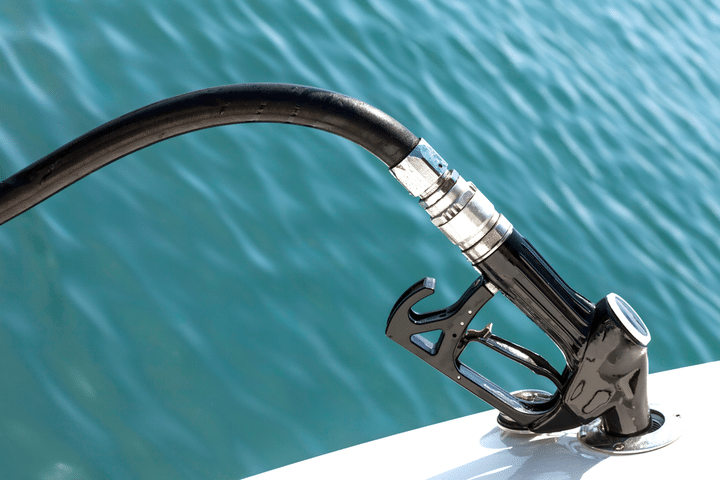
What are considered safe refueling best practices?
The above procedure incorporates all of the best practices. However, for an added layer of safety from an environmental perspective, many boaters will keep a fuel diaper handy in case of any spills. Naturally, other best practices for fueling any vehicle (such as not smoking) also apply.
What are the important steps in the fueling process of a boat?
All the steps listed above are important—none should be skipped or eliminated.
Can I fuel my boat at a gas station?
Absolutely. Just remember to look out for those additional issues we mentioned above.
Where do you put the fuel in a boat?
Every boat is different, but most have a well-marked fuel fill that’s usually located on or near an aft gunwale or side deck. In the case of small boats with small outboard motors and a portable gas tank, the fill is generally located on top of the tank itself.
Where can I learn more about boating?
You can learn more by reading through Boatsetter’s boating basics archives. There you will find How to Anchor at the Beach, 6 Easy Steps to Dock a Pontoon, and more.
If you’re looking for more of a hands-on approach, Boatsetter’s got that too. Join Boatsetter Academy, a free, on-water beginner’s boating class teaching the basics of operating a boat. Courses run for two hours and are held nationwide. Find a boating course near you!
About Boatsetter
Boatsetter is a unique boat-sharing platform that gives everyone — whether you own a boat or you’re just renting — the chance to experience life on the water. You can list a boat, book a boat, or make money as a captain.
List. Rent. Earn— Only at Boatsetter
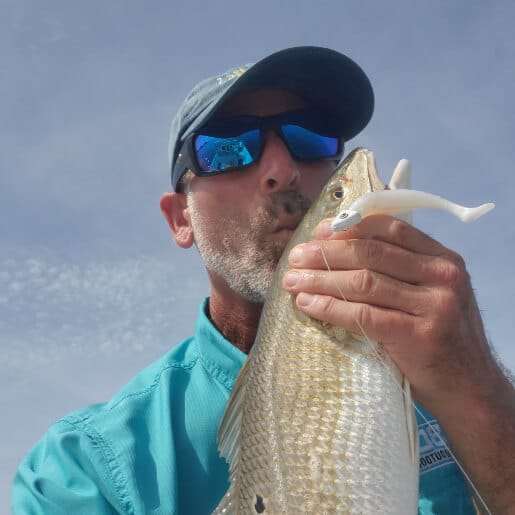
With over three decades of experience in marine journalism, Lenny Rudow has contributed to dozens of boating and fishing publications and websites ranging from BoatU.S. Magazine to BDOutdoors.com. Rudow is currently the Angler in Chief at Rudow’s FishTalk, he is a past president of Boating Writers International (BWI), a graduate of the Westlawn School of Yacht Design, and has won numerous BWI and OWAA writing awards.
